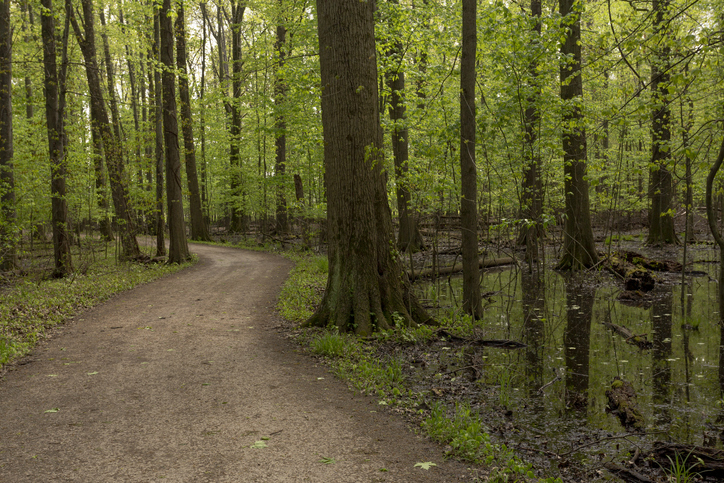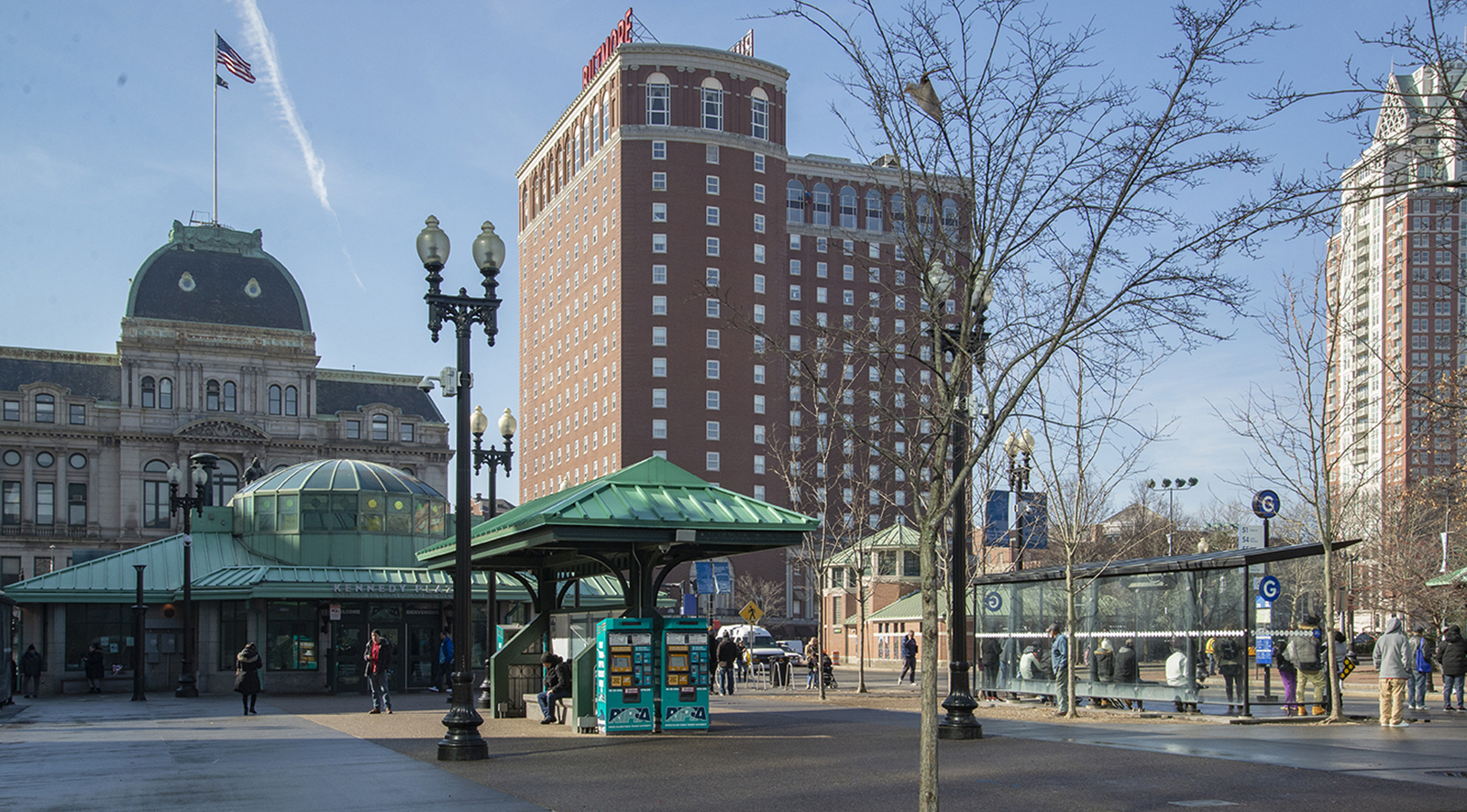Replace 6-10 Connector with Urban Boulevard
August 11, 2014
People decide which kind of transportation to take based on what is convenient and inexpensive. Our preferences make a small contribution to the decision, but we’re mostly just pragmatic. Due to the massive public investments in highways and car infrastructure that our federal, state and local governments have made in the past 50 years, in many places today the only safe option is cars. I think you’ll agree that having more options would be better.
We built for cars, and now deferred maintenance is coming back to bite us. In many places, bicycle and pedestrian safety weren’t considered in the construction of roads or residential and commercial development. While public transit agencies are chronically underfunded, lawmakers desperately smash piggy banks to find money for highway repair.
But as those public works maintenance bills come due and the federal money that usually pays for them dries up, many state and local governments are realizing that it’s a much better use of their transportation budget to invest in options that are lower cost than rampant kowtowing to wider highways and more flyovers.
In Providence, an estimated $500 million of repairs are needed on a small highway spur called the 6-10 Connector. This highway occupies 73 acres of land on the city’s West Side, cutting off the vibrant neighborhood of Federal Hill from the Woonasquatucket River and the neighborhoods of Olneyville and Valley. The rich legacy of Providence’s industrial past is visible in the buildings of these neighborhoods, and but for the concrete wall of exhaust fumes isolating them, they could share the vibrancy present in Federal Hill.
At the same time as state and local governments are faced with the nine-figure price tag to keep this monument to auto-dependence functional, the Rhode Island Public Transit Authority (RIPTA) is rebranding its best-used bus lines as Bus Rapid Transit (BRT). BRT is a relatively new innovation in transit, based on the idea that with adequate investment, bus service can be as convenient and comfortable as subway or light rail.
Cities around the world — especially in Colombia and Brazil — have shown that strong BRT systems have increased mobility and accessibility for a relatively low price tag. As RIPTA adds to its line improvements, it would be good to see local and state government offer their support for a successful BRT system through components such as: dedicated lanes or right-of-ways; preference at traffic lights so that buses always get a green light; and bus stops more like subway stations featuring off-board fare collection, no step up to entry, real-time displays of wait time and big, well-designed maps.
Let’s get back to that ugly expensive highway that needs to be removed. Highway removal has a successful recent history across North America. The Embarcadero in San Francisco and the West Side Highway in New York are the two most-often cited examples. Other cities have seen the removal of urban highways leading to reduced traffic and economic development.
Counterintuitively, more highway lanes leads to more traffic. As Providence has seen with the land made available downtown through the moving of I-195, the opportunities for real-estate investment on former highway land are enormous.
I suggest the 6-10 Connector be removed. I suggest replacing it with a boulevard that includes separated walking and cycling paths and dedicated transit lanes. I suggest we contact Michael Lewis at RIDOT and the gubernatorial candidates to ask for the conversion of this space to a safer urban corridor.
It’s time Rhode Island made the mature decision on transportation infrastructure and focused on more cost-efficient mobility.
Providence resident Alex Krogh-Grabbe has a master’s degree from Tufts University in urban and environmental policy and planning and served as the founding executive director of the Amherst Business Improvement District before moving to Rhode Island.
Categories
Join the Discussion
View CommentsRecent Comments
Leave a Reply
Your support keeps our reporters on the environmental beat.
Reader support is at the core of our nonprofit news model. Together, we can keep the environment in the headlines.
We use cookies to improve your experience and deliver personalized content. View Cookie Settings




You can also read the post with original headings and formatting here: http://www.alexkg.com/ri-should-save-costs-and-replace-6-10-with-a-boulevard/
It's been exciting to meet Alex recently, and to see that he's decided to take up the cause of removing this highway, which is something I've also written about.
Some important points to remember:
Traffic congestion is non-linear– Just 10% more car volume can be the difference between a road moving smoothly, and being a parking lot. We have roads like 6/10 designed with very close exit and entrance ramps, so they're used very much as local routes, and 40% of U.S. car traffic is made up of trips under 2 miles. Add to this the fact that 6/10 cuts off the grid of streets from connecting to one another, and you can see why much of the traffic congestion we experience is because and not despite this road.
Wired Magazine had a good explanation of this concept, which was in no way news for people who study transportation, but does help to explain it to the general public: http://www.wired.com/2014/06/wuwt-traffic-induced-demand/
A lot of urban freeways have been removed–often times without any kind of planning, as in the case of an earthquake knocking down the route–and seen traffic get better, not worse. This is because of this concept of induced demand to drive. We can take this a step further, and really plan out our removal of 6/10, so that when it is gone, it will provide bus lanes and bike access, so that we're not only removing the induced demand to drive, but also replacing it with other options.
Great post! I recently heard that removing a limited access highway for a surface boulevard is recognized in Federal transport law as it is an eligible project under the "Transportation Alternatives" program. Though that is a very small program, as we are facing spending about half a billion $ just to repair what we have on Route 6/10 anyway, conversation about the idea of removal should be encouraged. I think to some extent it is not just RIDOT that must be convinced, it is also the city of Providence which gave up neighborhood connections to facilitate suburban commutes to the city, and it is Providence that suffers the most from all the noise, pollution and congestion from induced traffic. I hope the candidates for Mayor hear about Alex's idea here.
Great idea!. Lets take the connector down and let all 3,000 cars per hour from it drive down Hartford Avenue through Olneyville and see what happens.
Actually, Dan, people drive when it's most convenient to do so. 6/10 make it very convenient, and without it there, we can infer from what's happened in other cities that the traffic will diminish. The principle is called induced demand. And if you read my article, I actually suggest replacing the limited-access highest with an urban boulevard, so that would be the direct line most closely resembling what people would be used to, rather than Hartford Ave.
Wow, talk about thinking outside of the box (with apologies to James Kennedy above and other who've been writing about this idea)! After living for nearly 30 years in greater Providence, there is no greater eyesore around than the 6-10 connector, either to cross on old Dean St. or to travel on (yee-ha!!).
Thinking about the Embarcadero or Hudson River Park (or India Point Park or South Water St in Providence), what terrific images to think about, cruising along the rehabilitated Woonasquatuckett River on a "BRT" (or a bike!!), enjoying the scenery.
Simply repaving this with $500 million of federal (or our own) dollars would seem a pretty weak effort by "The Creative Capital"!